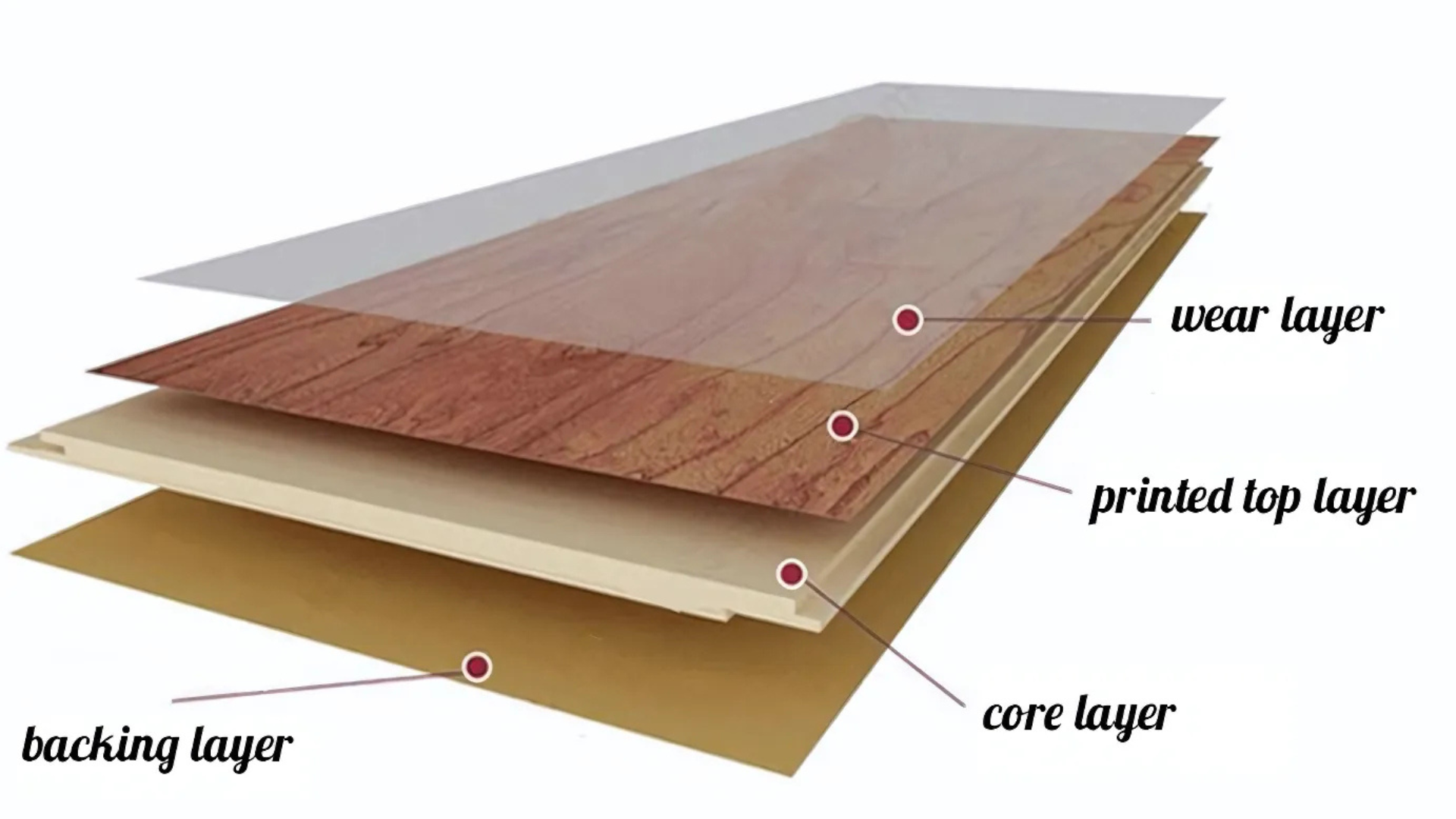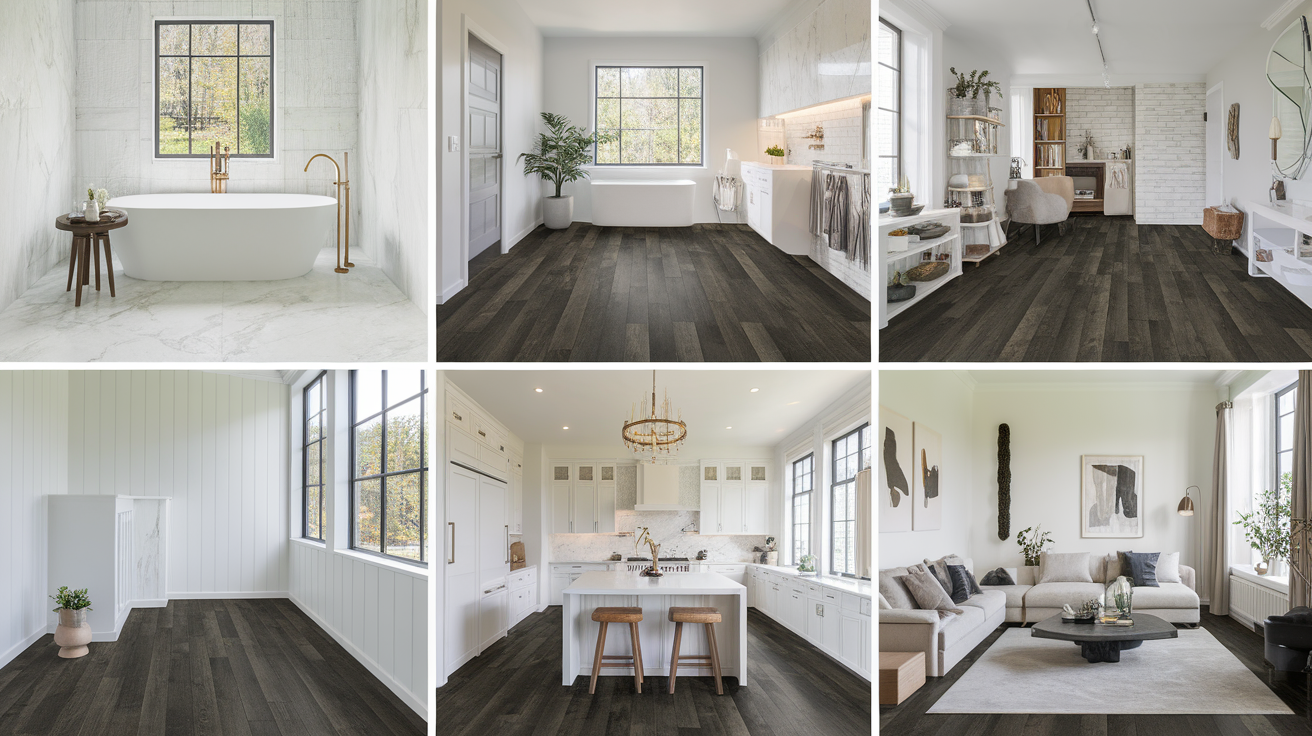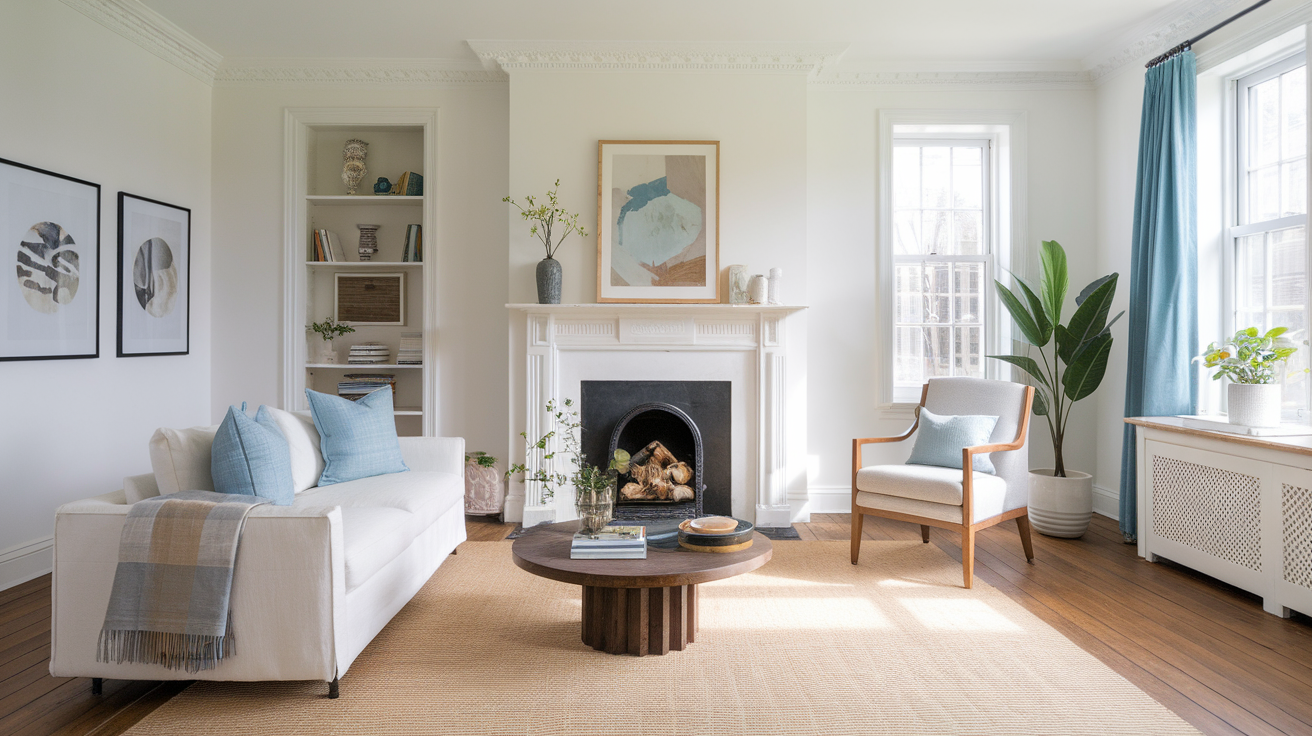When I first heard about WPC flooring, I had no idea what it meant. It sounded a bit confusing. But once I dug in, I found out it’s actually pretty simple, and it’s a great option for many homes.
WPC stands for Wood Plastic Composite, which is a mix of wood fibers and plastic. This type of floor looks nice, feels strong, and can handle spills and messes better than regular wood. I know picking the right floor can be a big choice.
That’s why I wanted to share what I’ve learned in a way that’s easy to follow. In this blog, I’ll break down what WPC flooring really is, how it works, and why people like it.
If you’re curious about new flooring options, keep reading. You might find that WPC flooring is just what you’ve been looking for.
What Does WPC Flooring Mean?

WPC stands for Wood Plastic Composite. This flooring is made by combining wood-like fibers with plastic. The result is a strong, durable floor that looks like wood but acts more like vinyl.
It’s called a hybrid floor because it mixes parts from both wood and plastic. Some WPC floors also have extra layers, like a backing for comfort and a wear layer to protect the surface.
WPC floors are known for being:
- Water-resistant
- Easy to install
- Comfortable to walk on
- Good-looking like hardwood
Let’s look closer at how WPC flooring is made and why it works so well.
What Is WPC Flooring Made Of?

WPC floors usually have four layers. Each one has a job to do:
1. Top Wear Layer: This is the clear top part that protects the floor. It guards against scratches, stains, and everyday wear.
2. Printed Vinyl Layer: This layer has the floor’s design. It looks like wood, stone, or tile. It’s printed to look real, but it’s not actual wood.
3. WPC Core: This is the heart of the floor. It’s made from a mix of wood fiber and plastic. It’s strong but soft enough to feel good under your feet, and it keeps water from soaking in.
4. Backing Layer: The bottom layer helps with balance and support. It also adds comfort and reduces noise.
What Makes WPC Flooring Different?
WPC flooring stands out because it blends the best parts of vinyl and wood into one product. But it’s not just a mix; it solves problems that many other floors have. Let’s break it down.
1. The Core Is Thicker and Softer
The biggest difference lies in the core. WPC stands for Wood Plastic Composite, and the core is a mix of wood fibers and plastic.
This core is thicker and more flexible than the solid plastic or stone core used in other types of floors like SPC (Stone Plastic Composite).
What does this mean for you?
- The floor feels softer under your feet, which is great for standing longer (like when you’re cooking).
- It also absorbs sound better, so footsteps and dropped items don’t echo as much.
2. Water-Resistant from Top to Bottom
Many floors get ruined when water gets underneath them. Not WPC. Its core doesn’t swell or warp like laminate or real wood when wet, making it safe for kitchens, bathrooms, and basements.
WPC flooring holds up even if you spill something and forget to clean it up right away. That’s a big deal in homes with kids, pets, or lots of foot traffic.
3. Realistic Look Without the Fuss
WPC flooring uses a printed layer that looks just like wood, tile, or stone. Modern printing makes it look very real, but without the high price or upkeep of the real thing.
Plus, it won’t need sanding, staining, or sealing like real wood. Thus, you get that stylish look with much less work.
4. Click-Lock Edges for Easy Setup
Another thing that makes WPC different is how easy it is to install. Most WPC planks have click-and-lock edges, which means they fit together without glue or nails. You can put them right over most old floors.
This “floating floor” system makes it a favorite for DIY projects. It also means fewer tools, less mess, and a faster install.
5. Comfort That Lasts
Some floors are hard and cold, especially on bare feet. WPC is different. Its core gives it a slight cushion. You’ll notice the extra comfort right away, especially in rooms where you walk or stand a lot.
This makes it a good fit for bedrooms, living rooms, and play areas.
Where Can You Use WPC Flooring?

One of the best things about WPC flooring is how versatile it is. That means you can use it in many different rooms and for lots of purposes.
Because it handles moisture, foot traffic, and everyday wear so well, WPC flooring fits in almost any space in your home.
1. Kitchens
Kitchens are busy places. There are spills, dropped dishes, and people walking in and out all day. WPC flooring is a great choice here because:
- It’s water-resistant, so spills aren’t a big deal.
- It’s easy to clean, which helps after cooking messes.
- It’s soft underfoot, so standing for long periods doesn’t feel too hard on your feet.
2. Bathrooms
Bathrooms have one big problem: water. Regular wood or laminate floors can get damaged fast. Believe me, I know. But WPC holds up well because:
- The core does not soak up moisture.
- It won’t swell or warp like other floors.
- It’s safe to use near tubs, toilets, and sinks.
Just make sure you seal around the edges to stop water from getting underneath.
3. Laundry Rooms
Laundry rooms can flood or have water spills from washing machines. WPC floors:
- Resist moisture and mold
- Handle heavy machines
- They are easy to mop or wipe clean
That makes them a safer and smarter pick than many other floor types.
4. Basements
Basements can feel cold, damp, and dark. WPC flooring can help fix that:
- It works well in humid spaces.
- It adds a warmer, more comfortable feel than tile or concrete.
- It can be installed as a floating floor, which is great if the subfloor isn’t perfect.
WPC helps turn a basement into a cozy, finished space.
5. Living Rooms
In living rooms, you want style, comfort, and durability. WPC flooring offers:
- Wood-look finishes that match any decor
- A softer feel underfoot than tile or stone
- Scratch resistance, which helps with kids, pets, and furniture
It’s a solid pick if you want a beautiful floor that can handle real life.
6. Bedrooms
Bedrooms need comfort and quiet. WPC floors are:
- Gentle on bare feet
- Quieter than hard floors
- Warm-looking with wood-style designs
If you want a calm, cozy space, WPC flooring is a great base to start with.
7. Hallways and Entryways
These areas get lots of traffic. People drag in dirt, rain, and snow. WPC floors are ideal because:
- They’re durable and hold up to wear
- They’re easy to clean
- They don’t get damaged from wet shoes or boots
Put down a doormat, and you’re good to go.
WPC vs. Other Flooring Types
There are many types of flooring to choose from, and each one has its strengths. WPC flooring is becoming more popular because it offers a mix of comfort, water resistance, and good looks.
But how does it really compare to other types like vinyl, laminate, hardwood, tile, and SPC? I’ve made this simple table to help you see the differences more clearly.
| Feature | WPC Flooring | Vinyl Flooring | Laminate Flooring | Hardwood Flooring | SPC Flooring | Tile Flooring |
|---|---|---|---|---|---|---|
| Water-Resistant | Yes | Yes | No | No | Yes | Yes |
| Soft Underfoot | Yes | Sometimes | Sometimes | Yes | No | No |
| Durable | Very durable | Durable | Moderate | Very durable | Very durable | Very durable |
| Looks Like Wood | Yes | Yes | Yes | It is real wood | Yes | Sometimes (wood-look tile) |
| Scratch Resistance | Good | Moderate | Moderate | Scratches easily | Very good | Very good |
| Installation | Easy (click-lock) | Easy | Easy | Hard (nails or glue) | Easy | Hard (grout and tools) |
| Comfort | Soft and quiet | Somewhat soft | Varies | Natural warmth | Hard and cold | Hard and cold |
| Best for Wet Areas | Yes | Yes | No | No | Yes | Yes |
| Price Range | Mid-range | Budget-friendly | Budget-friendly | High | Mid-range | High |
| Lifespan | 10–20 years | 5–15 years | 5–10 years | 20–100+ years | 15–25 years | 20–50+ years |
| DIY Friendly | Very DIY-friendly | Very DIY-friendly | Very DIY-friendly | Not DIY-friendly | Very DIY-friendly | Not DIY-friendly |
WPC flooring stands out because it blends comfort, water resistance, and style in one product. It’s easier to install than hardwood or tile, softer underfoot than SPC or ceramic, and more durable in wet areas than laminate.
How to Care for WPC Floors
Taking care of WPC flooring is easy. Here’s how to keep it looking good:
Daily: Sweep or use a dry mop to remove dirt and dust.
Weekly: Use a damp mop with warm water. Avoid soaking the floor. Use a cleaner made for vinyl or WPC floors.
Tips: Put felt pads under furniture. Use rugs at doors to stop dirt and water. Don’t drag heavy stuff across the floor.
WPC floors don’t need wax or polish. They stay shiny on their own.
How Long Does WPC Flooring Last?
With good care, WPC flooring can last 10 to 20 years or more. Some brands even offer 25-year warranties for residential use.
Things that affect how long it lasts:
- How thick the wear layer is
- How well you clean and maintain it
- How much traffic does the room get
Can WPC Floors Be Repaired?
Yes, WPC floors can be repaired. If a plank gets damaged, you don’t have to replace the whole floor, just the damaged piece. If it’s near a wall, you can unlock the nearby planks and snap in a new one.
For planks in the middle of the room, you may need to cut and glue a replacement. Small scratches can be fixed with a repair kit or touch-up marker. It’s also smart to use felt pads under furniture to help prevent damage in the first place.
Conclusion
WPC flooring is a smart and easy choice for many homes. It gives you the look of real wood without the high cost or upkeep. You can use it in kitchens, bathrooms, basements, and just about any room in the house.
It handles spills, foot traffic, and messes much better than some other types of floors. Plus, it feels softer underfoot and helps reduce noise.
It’s also great for people who are like me and tend to do projects themselves. With its click-lock system, WPC flooring is simple to install and doesn’t need glue or nails.
Cleaning it is quick, and fixing small damage is easy too. Over time, it stays strong and looks good.
If you’re looking for something that works well and looks great, WPC flooring might be the right fit. It’s strong, stylish, and built to last. Take your time, check your needs, and see if WPC fits your space. It just might surprise you.

